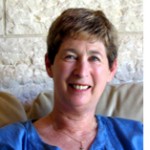Julius Matthias; a Pact with the Devil by Michelle Mazel; New Meridian (c) 2017.
By Dorothea Shefer-Vanson

MEVASSERET ZION, Israel — This family saga spans the first half of the twentieth century, focusing primarily on good-looking Julius Matthias, the son of a poor Jewish family, whose one ambition in life is to become a doctor. In order to achieve this aim he agrees to marry a widow a few years older than himself, the unattractive daughter of a wealthy Jewish pharmacist in his home town of Nagyvarad. The town is a provincial backwater in what was then Hungary, but changed hands in the aftermath of the First World War, when the region was annexed by Romania. Over the years the town was also considered part of Transylvania, and its name was changed to Oradea, as the vast Austro-Hungarian empire crumbled and borders shifted accordingly.
Having agreed to accept the bargain (the so-called pact with the devil) proposed by his prospective parents-in-law, the young man is sent to Vienna to study medicine, and remains there for five years, until his studies are complete. The relations between his own impoverished family and that of his wealthy wife are not good and the trajectory of his life is described in all its agonising detail, stuck as he is in an unhappy union with a woman who does not love or even like him. Our protagonist does his best to keep his side of the bargain, but finds it increasingly difficult, and sometimes seeks solace in the arms of other women.
Nevertheless, four children are born to the unfortunate couple, though the eldest, a boy of five, dies by drowning in the local river. The vicissitudes of the lives of the two families form the substance of the book, and the reader is drawn into the manners and mores of the Jewish community in this far-flung region of Hungary. For Jews, arranged marriages are the norm, and the fate of a young woman is determined mainly by her physical appearance and the size of her dowry.
The society that is depicted here is neither the traditional orthodox community of the Polish stetl nor the sophisticated milieu of Vienna, but something in-between, reflecting the atmosphere of an environment where people aspire to attain higher social standing while maintaining a smattering of Jewish tradition. The cities of Bucharest and Budapest constitute the pinnacle of sophistication for the denizens of this provincial outpost, and money plays an important role in determining one’s status in society.
During the First World War Dr. Matthias is able to tend to wounded soldiers, and thereby gains the gratitude of senior officers and non-Jewish aristocrats, who later offer him protection when anti-Semitic riots erupt in his home town. The fact that the riots are fomented by students rather than an ignorant rabble gives him cause for concern, but he and the rest of the Jewish community hang on hoping that the situation will improve.
Dr. Julius Matthias becomes a successful and well-regarded physician in the town despite his own personal trials and tribulations. In the 1930s, sensing that war is about to engulf eastern Europe once again, he manages to send his two eldest children to study in Paris, which is considered to be safer and less anti-Semitic. However, despite all his efforts he is unable to prevail upon his wife to leave her home and flee with him to Paris or even Switzerland, where he has managed to transfer funds.
Throughout the book the author interweaves an account of developments in the wider political arena and the way in which they affect the fate of the individuals whose lives she is describing.
As the book comes to a conclusion in the throes of the Second World War, we find Dr. Matthias fleeing from the Germans who have overrun the country and killed his wife in the process of the community’s deportation to a concentration camp. Helped by a non-Jewish childhood friend, he is able to flee Hungary on foot, eventually reaching Switzerland, which the author defines as ‘his own promised land.’
This account of Jewish life in the provincial towns of eastern Europe in the period before and after the First World War depicts a time and place that has not been extensively described in contemporary literature, giving the reader an insight into an unfamiliar world that has since vanished for ever.
*
Shefer-Vanson is an author and freelance writer based in the Jerusalem suburb of Mevasseret Zion, Israel. She may be contacted via dorothea.shefer@sdjewishworld.com